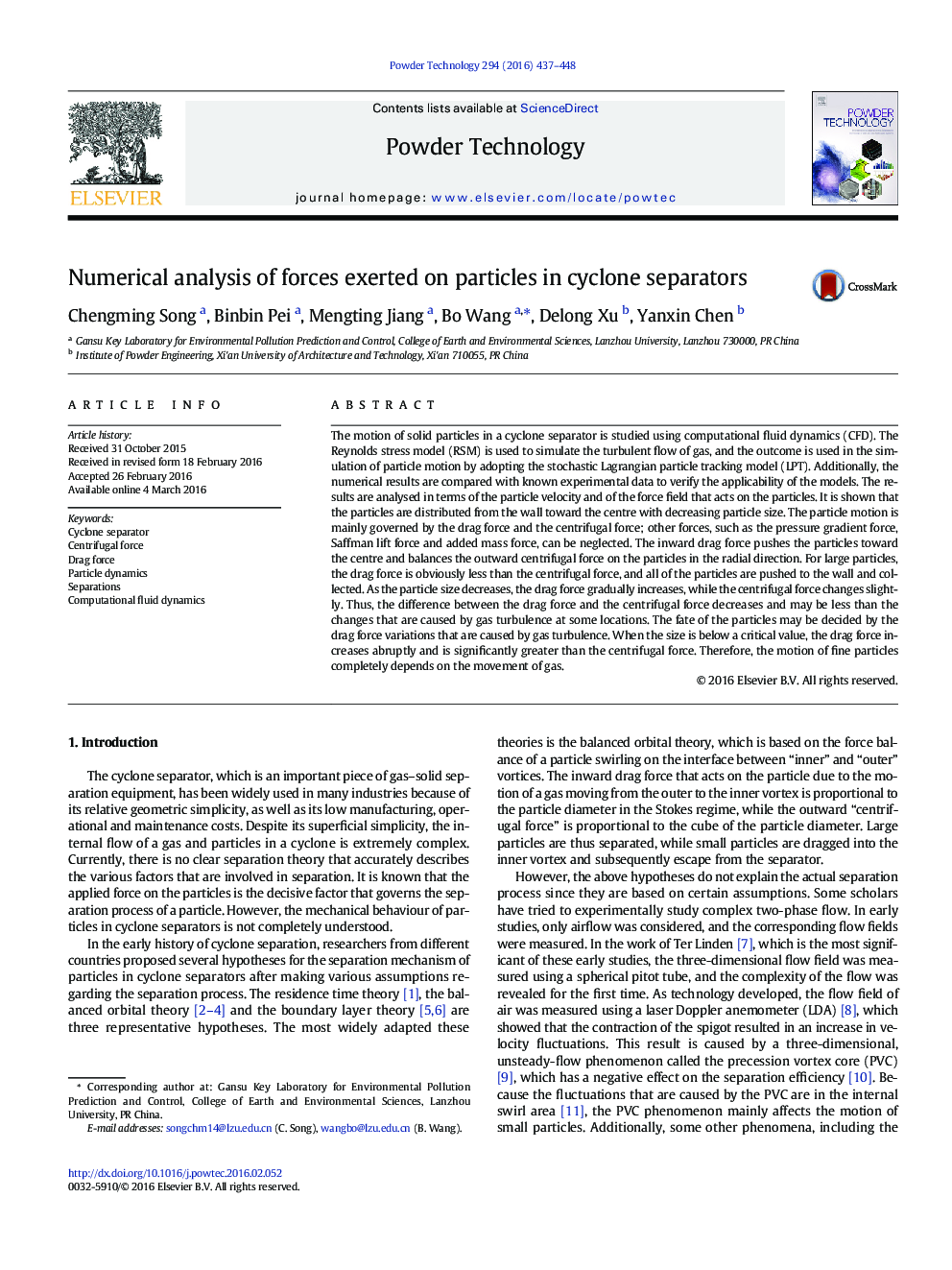| کد مقاله | کد نشریه | سال انتشار | مقاله انگلیسی | نسخه تمام متن |
|---|---|---|---|---|
| 235086 | 465627 | 2016 | 12 صفحه PDF | دانلود رایگان |
• The motion of particles in a cyclone is governed by the drag force and the centrifugal force.
• The particles are distributed from the wall toward the center with decreasing particle size.
• Large particles are collected as the inward drag force is less than the outward centrifugal force.
• Turbulence plays an important role in controlling the motion of particles with medium sizes.
• The motion of small particles with a huge gas drag force are completely related to the gas flow.
The motion of solid particles in a cyclone separator is studied using computational fluid dynamics (CFD). The Reynolds stress model (RSM) is used to simulate the turbulent flow of gas, and the outcome is used in the simulation of particle motion by adopting the stochastic Lagrangian particle tracking model (LPT). Additionally, the numerical results are compared with known experimental data to verify the applicability of the models. The results are analysed in terms of the particle velocity and of the force field that acts on the particles. It is shown that the particles are distributed from the wall toward the centre with decreasing particle size. The particle motion is mainly governed by the drag force and the centrifugal force; other forces, such as the pressure gradient force, Saffman lift force and added mass force, can be neglected. The inward drag force pushes the particles toward the centre and balances the outward centrifugal force on the particles in the radial direction. For large particles, the drag force is obviously less than the centrifugal force, and all of the particles are pushed to the wall and collected. As the particle size decreases, the drag force gradually increases, while the centrifugal force changes slightly. Thus, the difference between the drag force and the centrifugal force decreases and may be less than the changes that are caused by gas turbulence at some locations. The fate of the particles may be decided by the drag force variations that are caused by gas turbulence. When the size is below a critical value, the drag force increases abruptly and is significantly greater than the centrifugal force. Therefore, the motion of fine particles completely depends on the movement of gas.
Figure optionsDownload as PowerPoint slide
Journal: Powder Technology - Volume 294, June 2016, Pages 437–448
